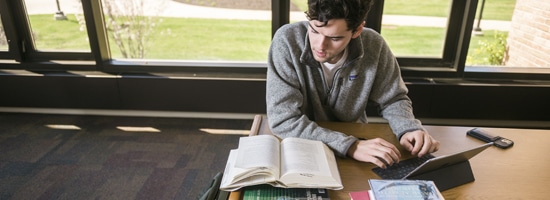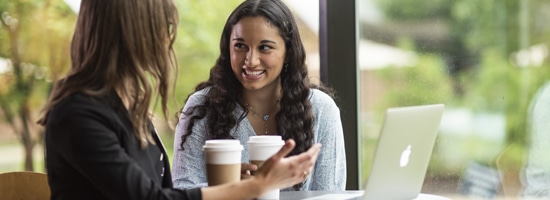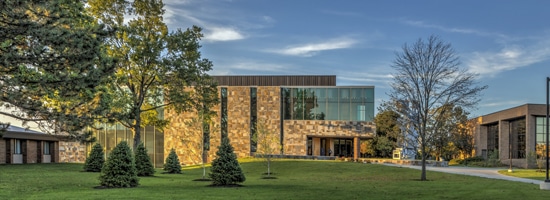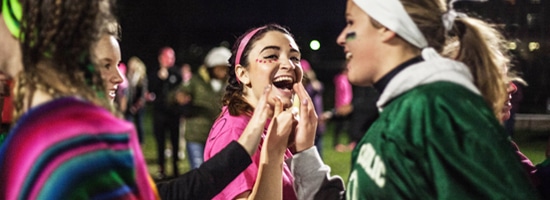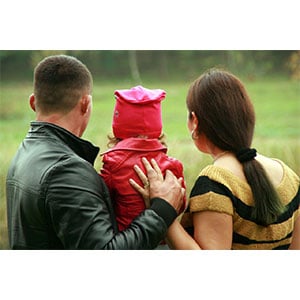Editor’s Note: Today, Pastor Kizombo Kalumbula continues his two-part series on compassion. Click here for Part 1.
In my last post I closed with two questions. First, could there be more true compassion going on in Grand Rapids than what meets the eye? Second, could it be that God is beginning to do something new in my city? There seems to be a paradox playing out here. On the one hand, Grand Rapids is ranked 51st out of the 52 largest cities in America where African Americans are doing the best economically, and on the other hand, Grand Rapids seems to be a magnet city for resettlement of refugees and new immigrants. What is attracting these new arrivals to either request to be resettled in Grand Rapids or to migrate to Grand Rapids after being resettled elsewhere in the United States?
I cannot help but attribute this phenomenon to the hospitable spirit of the people of Grand Rapids. And yet, I still wonder about the disparity in the life of its citizens. What kind of lives would these refugees and immigrants lead after their honeymoon period ends if they are not integrated into the fabric of the city? What could be done to help improve or redeem the unflattering reputation of Grand Rapids as published by Forbes Magazine and Huffington Post writers? The plight of the people of color in my city is bleak and in need of urgent intervention.
I believe that intervention is best performed and delivered when all segments of the city are awakened to the realization that we cannot thrive as a city unless all of our citizens are included in its prosperity. True compassion is the main path through which flourishing can occur. And by “true compassion,” I mean our total immersion into each other’s condition.
This is not an easy task since by nature human beings are consumed with self-preservation. Olga Klimecki and Tania Singer (2012) integrate empathy research in psychology and social neuroscience and argue that others-oriented feelings motivate pro-social behavior—which they say can be taught. We can choose to respond to the suffering of others through compassion, sympathy and empathic concern, all of which are others-oriented emotions. Such an intentional choice will generate pro-social behavior in us.
However, empathic distress and personal distress (feeling uncomfortable due to a bad situation) cause avoidance and are self-oriented emotions that lead people to pull back from helpful behavior. We are motivated by the desire to protect ourselves from negative emotions, which prevents the total immersion we need.
Looking at it another way, there is a difference between sympathy and empathy. When the suffering of others causes our discomfort, we may be motivated by sympathy to do acts of benevolence cloaked in compassion (often one-time gifts or projects that provide short-term aid and make us feel better but don’t solve the long-term problem). However, total immersion in the suffering of others can only be realized when followers of Christ are no longer concerned with the preservation of their religious institutions or the status quo of their self-preservation and through empathy become more concerned with living out the transformative power of the gospel of Jesus Christ.
In Luke 6:36, Jesus commands his followers to “be compassionate, just as your Father is compassionate” (NLT). We can protest and declare that we are a compassionate, benevolent and philanthropic community. As commendable as that is, the findings of the aforementioned articles clearly point to a deplorable living condition of 20 percent of the citizens of Grand Rapids. I am convinced that being truly compassionate has the greatest potential of improving the lives of individual citizens of Grand Rapids and consequently improving the status of our entire city.
Therefore, I am advocating for a compassion revolution. True compassion requires immersing oneself in the condition of the other. One-time gifts and projects, though often valuable, can never be our full response.
I realize that according to Nouwen, McNeil, and Morrison (2006), this immersion is not a natural phenomenon to which normal human beings are attracted because, as in the words of Dr. Plantinga (1995), “This is not the way it’s supposed to be.” But we have the greatest potential to realize this revolution when we engage each other—one person engages another, a family engages another, a neighborhood engages another, or one faith community engages another. Individual people or churches cannot create a compassion revolution alone. It has to proceed out of an intentional cultivation of a culture of compassion. According to Gibson (2015), this can be done through authentically integrating empathy and practical assistance in teaching and leadership.
At Tabernacle Community Church, our faith community has taken some bold steps. In 2010, motivated by the priestly prayer of Jesus in John 17, our church leadership invited all the other faith communities in the neighborhood to a partnership. This culminated in a formation of an association we call “The Church of Alger Heights,” a collaboration of four churches in the neighborhood where our church campus is located. Two years into the association we hired a community coordinator with the express purpose of researching and understanding our community assets and being a liaison between the Church of Alger Heights, community stake holders, school and the neighborhood association.
This has given us, as a faith community, an opportunity to immerse ourselves into the lives of our neighbors. Through the teaching at Tabernacle, our “partners on mission” (our members) are engaging with their neighbors, and together they are exercising compassion in the city at large through immersing into the lives of others in our city. They do this through agencies such as Alpha Women’s Center, Family Promise and West Michigan Refugee Education and Cultural Center. The most moving example has been the warm welcome and compassionate love that our partners on mission have extended to a newly arrived Muslim refugee family of nine. The Abdoul family (a pseudonym) has experienced the lovingkindness through the immersion of the people of Tabernacle Community.
As we immerse ourselves into individuals’ lives, we begin to exercise true compassion toward them. For followers of Christ at Tabernacle Community Church, empathy for those who are suffering in our community has sprung into a ministry we call, “We Serve.” Through this ministry, our church has been able to partner with local agencies and engage the whole city. We are learning to put total immersion into practice and exercise the compassion Jesus calls us to. I invite you to join the compassion revolution and demonstrate the love of God for one another and our city.
WORKS CITED
- Gibson, A. (2015). Meanings and applications of compassion in teaching: A practical review of the Bible and education literature. Christian Education Journal, 12(1), 8-25.
- Klimecki, O., & Singer, T. (2012). “Empathic distress fatigue rather than compassion fatigue? Integrating finding from empathy research in psychology and social neuroscience.” In B. Oakley, A. Knafo, G. Madhavan, & D. S. Wilson (Eds.), Pathological Altruism (pp. 368-383).
- McNeill, D. P., Morrison, D. A., & Nouwen, H. (2006). Compassion: A reflection on the Christian Life. Garden City: NY: Random House.
- Plantinga, C. (1995). Not the Way It’s supposed to be: A Breviary of Sin. Grand Rapids, MI: Eerdmans.
